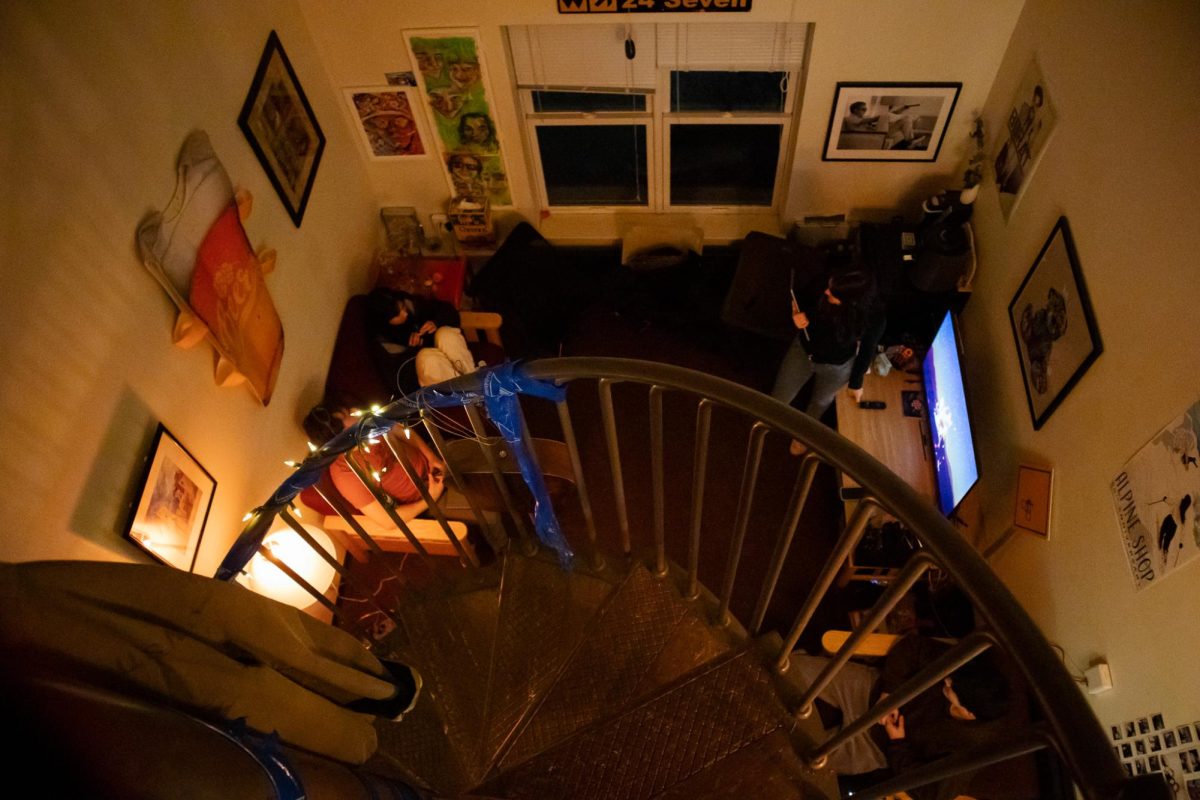“I have to read two novels, a play and commentary, write a paper on a Hinduism ritual, read excerpts from the Koran, and study popular religion in China all by the end of the week.” remarked UVM junior, Jon Jenusaitis, during breakfast one Monday. It is a common complaint amongst students that they have to cover too much subject matter in too little time. Often it is their depth of knowledge that suffers. Jon Douglas, a pre-med junior commented, “I just spent five hours studying for my Chem test, and after it’s done I won’t remember a thing. Not to mention I still have to work on Spanish.”
Many students around campus have expressed similar concerns that if they could focus on fewer classes their education would benefit immensely. However with the vast majority of colleges and universities in this country operating on a five class per semester system, the pool of ideas for unique academic calendars seems stagnant. Are there any examples of different education systems?
Well, yes. Colorado College implemented the block plan in 1970, which divides the year into eight three and a half week segments. Students only take one class during each of these segments and professors only teach one class. The result, Colorado College states on its website, is that “the student is an active participant instead of a passive recipient in learning.” Colorado College is of course on the fringe of academic systems.
The quarter schedule is a popular system used by many institutions. Dartmouth has developed its own quarter plan that they call the “D-plan”. It divides the year into four nine-week quarters that correspond to the seasons of the year. Four years means sixteen quarters, twelve of which Dartmouth students must spend in academic study (academic study includes spending a quarter abroad). What this all boils down to is three classes per quarter.
Still, the quarter system is far removed from the semester system we use at UVM. SUNY Binghamton and UNH, two of UVM’s neighbors similar in size and scope, operate on a semester schedule similar to us with one fundamental difference: students take four classes per semester. This is possible because they earn four credit hours per class, not three. Drew Magarian, a junior and political science major at UNH, said that he spends less than three hours a week in class for each class that he is enrolled in.
UVM students spend two and a half hours in class each week per class. When asked if he thought he would benefit from having one more class per semester, Drew responded, “I prefer the UNH system, especially once you start taking seminar classes because they require more time and attention.” Dr. Lauck Parke, Vice President for Undergraduate Education at the Provost office, said that there are many reasons why UVM along with the majority of colleges across the nation have a semester schedule, the most important being that it allows students to go home for the holidays. Another reason he conjectured was that it allowed students to go home for the summer, a vacation that was important in the past because college students were needed by their families to help with farming.
To give a more complete picture of the education spectrum Dr. Parke and Keith Williams, UVM’s registrar, offered a brief outline of colleges in England, in which students spend much of their time in independent study, punctuated infrequently by personal tutorials from professors. The quality of personal education in a system like this is high, however it is impossible to implement it on a mass scale. American schools are more efficient at getting a greater number of people a higher education, and as a result the rest of the world is adjusting to match our standards.
With such a large number of people flowing through schools, accreditation is necessary to regulate a student’s progress. “We use seat time (time spent in class) to rate the block of knowledge that a student is getting.” Dr. Parke explained. Therefore, a student that graduates from a four class per semester university is expected to have done the same amount of work as that of a five class per semester university.
The issue then is depth versus breadth. Students that go to a school like UNH or Binghamton graduate with about 32 to 33 courses whereas UVM students graduate after 42 to 46 courses. UNH students get more in depth with their courses, but do not get to take as many classes as UVMers. Mr. Williams says, “We make you into a flexible thinker by exposing you to a more flexible program.”
However is the increased breadth worth it if students are having trouble balancing five classes? “I’m failing one of my classes because I can’t balance my work load,” said Melissa Hyman, a junior, who is one of many UVM students that is forced to consistently put one class a semester on the back burner.
Change at UVM would require a massive overhaul. “We would have to rewrite every course, every curriculum,” says Mr. Williams. This is because of the accreditation system mentioned earlier. UVM needs to make sure that their graduates are credited with having completed a standard college education, and this means an expansive explanation of the work they did to achieve it. Change, though unlikely, begins with a desire for change.
















